Some Common Problems Growing Basil?
Troubleshooting Guide
Here are some frequently asked questions I receive from herb gardeners regarding problems with their basil plants:
- Why do basil leaves turn black?
- Why do basil leaves turn yellow?
- Why do basil leaves turn brown?
- Why is the basil plant not growing properly (small deformed leaves)?
- Why are the leaves of my basil plant wilting?
- Why do the stems of my basil plant turn brown?
- Why do the basil leaves have white spots?
- Why do the basil leaves have brown spots?
Do you also have one or more of these questions or problems? The good news is that we probably can help you and answer your question, because these questions are always with high probability linked to a couple of the common problems that almost every herb gardener has experienced when growing basil. So you are not the first and you won’t be the last.
Common problems, diseases and pests when growing basil
In this article I will try to explain how to deal with the problem based on the symptoms. Almost all problems can be brought back to one of the three following causes:
a. Underwatering the basil plant
Symptoms – When you notice that the soil is completely dry, and the leaves of the basil plant are wilting (hanging), and the leaves are still feeling soft, and it has been a while since you have watered the basil plant, then my guess is that your basil plant needs water.
Possible Solution – The good news is that overwatering is much worse than under watering your basil plant! So don’t panic when you see that the basil plant is wilting and starts to droop. It is actually better to wait to water the plant until it starts to sag a little bit. Basil can often take under watering very well, if you don’t let it stand dry for too long.
After watering you will see that the basil plant will recover very quickly and stems will stand straight up and leaves will look healthy very fast again.
b. Overwatering the basil plant
Symptoms – When you notice that the leaves are turning yellow (often starting with the lower leaves) and the leaves are drooping, wilting, and you have been given water regularly the last couple of days, then probably you must have overwatered your basil plant.
The constant watering has clogged the soil around the roots, and as a result of this the roots have started to rot. You can recognise rotting roots, when you remove the plant from the pot, and you see the roots are brown or black and when they feel soft and moist.
Possible Solution – The solution is simple : stop watering immediately and preferably put it into the sun or good lighting conditions so the soil can dry as quick as possible. In some cases, when overwatering occurred for a long period of time and the roots have been exposed to wet soil for too long, it can be possible that you no longer can save the basil plant.
My advice would be to check that the surplus of water can drain. In case the basil grows in a pot, I would remove the plant from its pot, check the opening of the bottom holes, remove the moist potting mix out of the pot and also remove the moist soil off from the roots. And replant using dry potting mix. Don’t give water for at least a few days until you see the plant recover. I would also advise to remove the yellow leaves in the process.
Again I want to stress that overwatering is a lot worse than underwatering!
c. Downy mildew
Symptoms – If the leaves of your basil getting brown and white spots, or the leaves are turning brown, before it normally should, it may have the disease Downy Mildew that is pretty common for basil these days.
Downy Mildew is caused by a fungus, and too much moisture in the air, increasing humidity, will facilitate its spreading.
It is a disease with symptoms that can fool you because it can look like your plants are just nutrients deficient, the plant and its leaves start to turn off colour, show patchy light yellow and then brown spots and eventually dies.
It looks like dirt that has splashed up on the lower leaves, but if you watch closer you can see actually the grey fluffy growth of downy mildew pathogen on the leaves.
The name of the downy mildew pathogen that attacks the basil is Peronospora Belbahrii. The disease seems to thrive in periods of rain or increased humidity, you can see the effect of it on the basil plant in the picture below.
There are some cultivar basils that are less susceptible for this disease.
There are a number of ways to control the downy mildew disease. Most of the registered fungicides for homeowners use are not very effective against the disease.
Anything you can do the reduce the humidity, for example spacing out the plants very well to allow more airflow around the plants, or if you grow your basil in pots and high humidity is expected, you can bring the pots inside during the night to avoid morning dew, if you can, and this can help delay the onset of the disease.
But by far the best thing you can do to prevent the disease is to plant a resistant cultivar like the Basil Eleonora. Downy Mildew seems to bee mainly a problem for the sweet basil.
Next to the symptoms of overwatering, under watering and Downey Mildew, there are a number of other frequently mentioned symptoms that may indicate that the basil plant is in trouble. Let’s take a look at these other symptoms:
d. Small and deformed basil leaves
Symptoms – When you notice that the new leaves of your basil plant, are staying small and don’t have the normal oval shape of a healthy basil leaves, then your basil plant is probably not getting enough light. This happens especially with basil plants that are kept indoors.
The leaves are probably small due to a lack of sunlight, which plants need to produce healthy leaves. As I explained Basil grows best with hot temperature, plenty of sunlight and good watering. Getting your plants more in the sun will help with the photosynthesis.
In some cases, when growing basil under a (not intense) grow lights I have also noticed that basil plants were only growing small and deformed leaves. Some sources mention that small leaves are related to how badly light exposure is optimised for the plant. Small leaves may be a sign to tone it down a bit on the direct light… but I am still experimenting with this so at this moment I can’t confirm.
Possible Solution – The solution is simple : More light! Either you have to find a spot where the basil plant gets more light in quantity and quality, or you have to look into adding some grow lights with enough intensity.
e. The stem of the basil plant turns brown or black
Symptoms – The stem of the basil plant becomes brown, black or woody. A brown stem on a young basil plant may indicate that the herb is infected by the fungal disease called Fusarium. This fungus enters basil plants via the roots and disturbs the water transport capacity of the plant, causing slow growth, yellowing leaves and decaying foliage. Finally the stem of the basil plant will turn brown at the base. The infected basil plant will eventually wilt and drop its leaves and die.
Possible Solution – This fungal disease is incurable, so your best hope is to spot it early and remove the infected plants to prevent it from spreading.
Pay attention to the situation of the plant, because it is common for older basil plants to develop a woody lower stem, especially when you have stopped pruning and they are allowed to flower. So for older basil plants a woody stem isn’t necessary an indication for this fungal disease. Don’t forget that basil is an annual plant. You can extend its life by optimal care but it will eventually die at the end of the season.
e. Black, brown or white spots on the leaves
Symptoms and causes:
Black or brown spots can have different causes such as sunburn, cold damage, fungal infection, a too high humidity combined with poor air circulation and last but not least insects feeding on the leaves.
Every issue will create a different type of black or brown spot, some are dry others are wet, some are large and others are very small, sometimes there are just a few and some problems causes hundreds on one leave,…
So when you have black spots action is required to act but not before making a good assessment of the growing circumstances in order to find the source of the problem and the appropriate action.
Very often the cause of tiny black spots on your leaves is due to insects feeding on the leaves and the tiny black spots is the faces that these little creatures leave behind. I had this problem with one of my basil plants, and I don’t need to tell you that the leaves are no longer fit for consumption.
I made a short movie of what these small creatures look like, available on our Youtube channel. More info about thrips and how to get rid of them is available in the blogpost “how to get rid of thrips on herbs” but finally I decided that the plant and the leaves was too damaged and the plant went into the bin.
Another common cause for black spots on basil leaves are fungi, caused by too high humidity and poor air circulation. Without going into detail, make sure to have sufficient air flow and always apply bottom watering. If that concept is new for you then watch the video about bottom watering on our Youtube Channel.
Assessment of the basil plant’s growing situation
Basil is a very popular herb but unfortunately it can suffer from several plant pathogens that can ruin the crop and reduce the yield of the plant if you don’t take care of the plant in an optimal way.
Hence the importance to regularly check the growth, the stem and leaves and assess the growing situation of your basil plants. Whenever you run into a problem, you should take a look at how you have treated the plant recently. Don’t rush into conclusions but take your time to remember when you watered, how frequently, when you fertilised, check the light situation, and so on. And based on that assessment you should improve the growing situation of the basil plant by taking appropriate action.
If you like to have a look at a specific problem together, then the quickest way is to join our Facebook Group and post pictures of the problems there. I and the other members will give you our point of view there.
Tell me about your specific struggle with growing basil
I realise that basil is probably the most popular herb in the world and lots of herb gardeners are growing the basil plant for it’s tasty leaves.
In order to have all the growing and caring information of this herb in one handy guide I am currently working on an extensive care guide for basil plants. This guide will be completely free for all the subscribers in the Amazing Herb Garden Community, so sign up and you will receive it immediately when it is finished.
And to help me focus on the real problems you all have, let me know in the comment section below about your problem and struggle so I can try to help and suggest a solution. That is why this site exists in the first place.

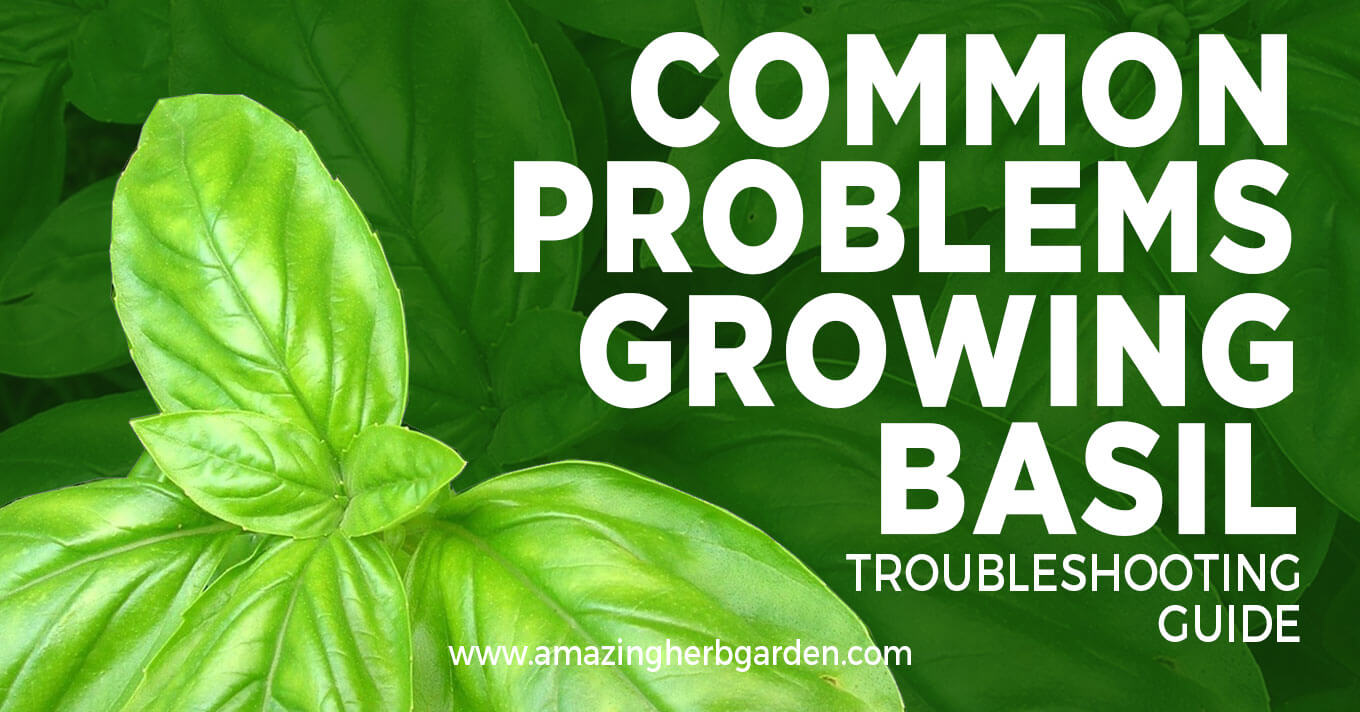
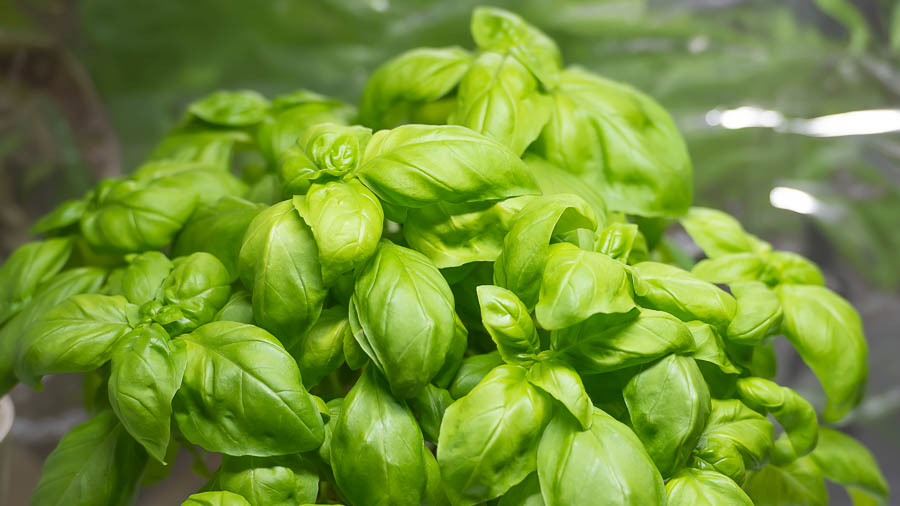
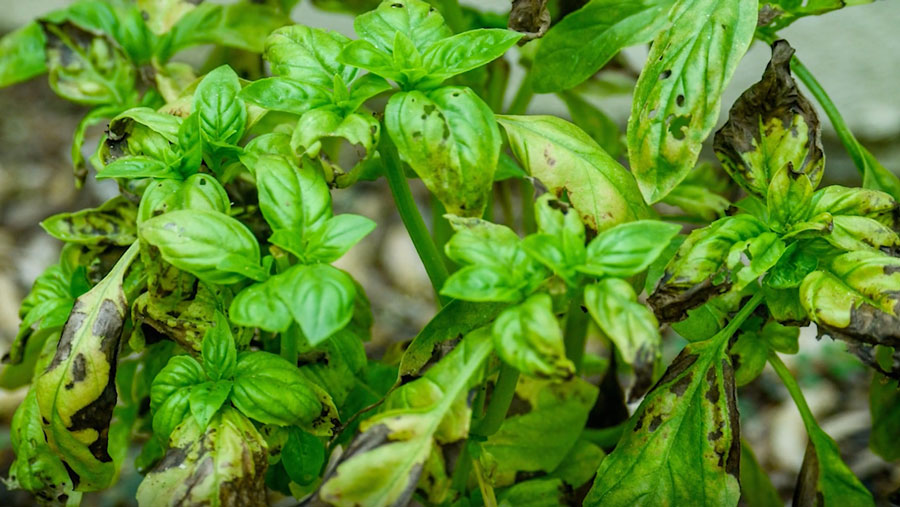
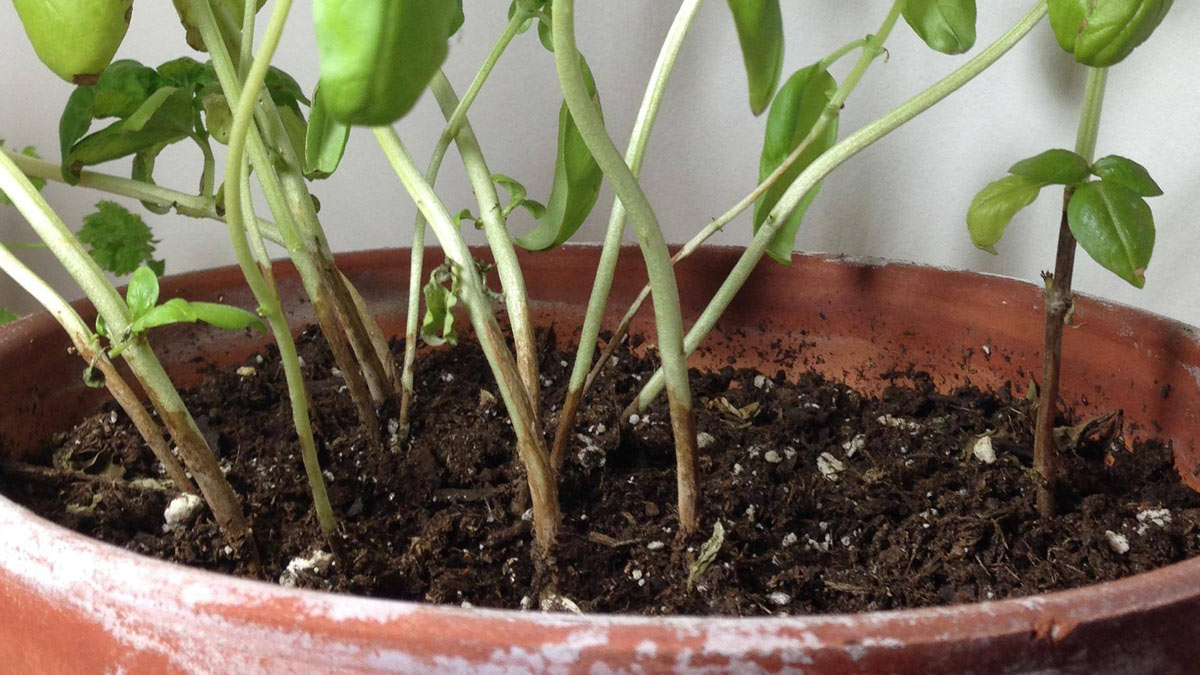
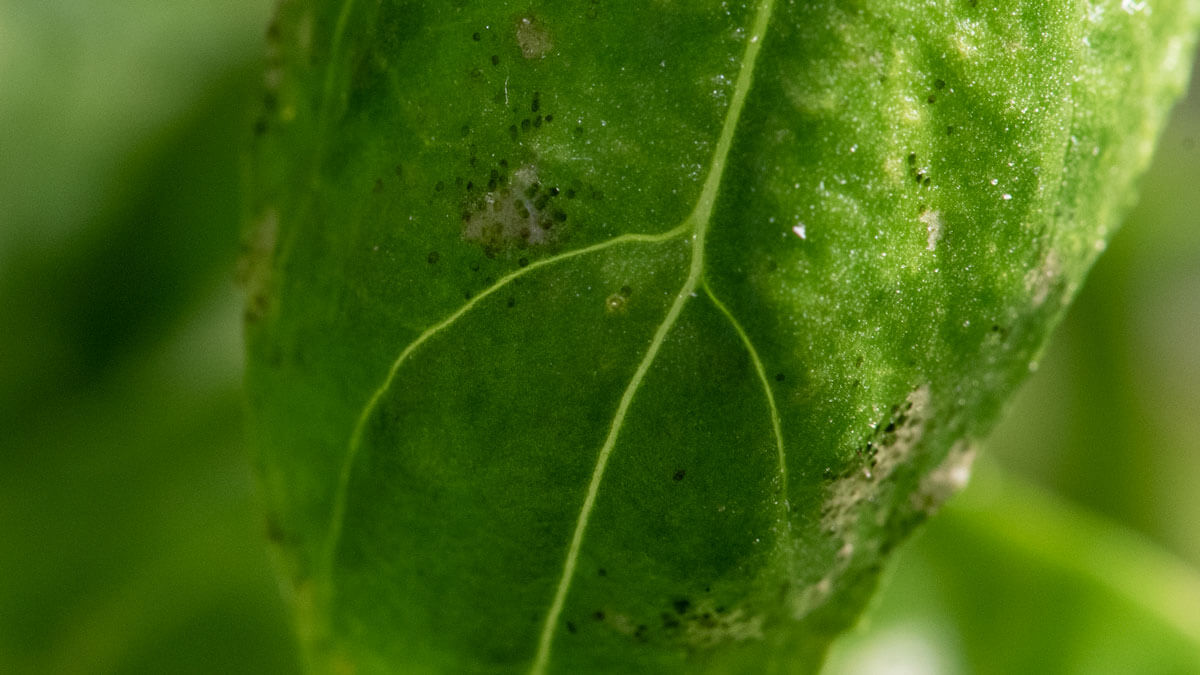
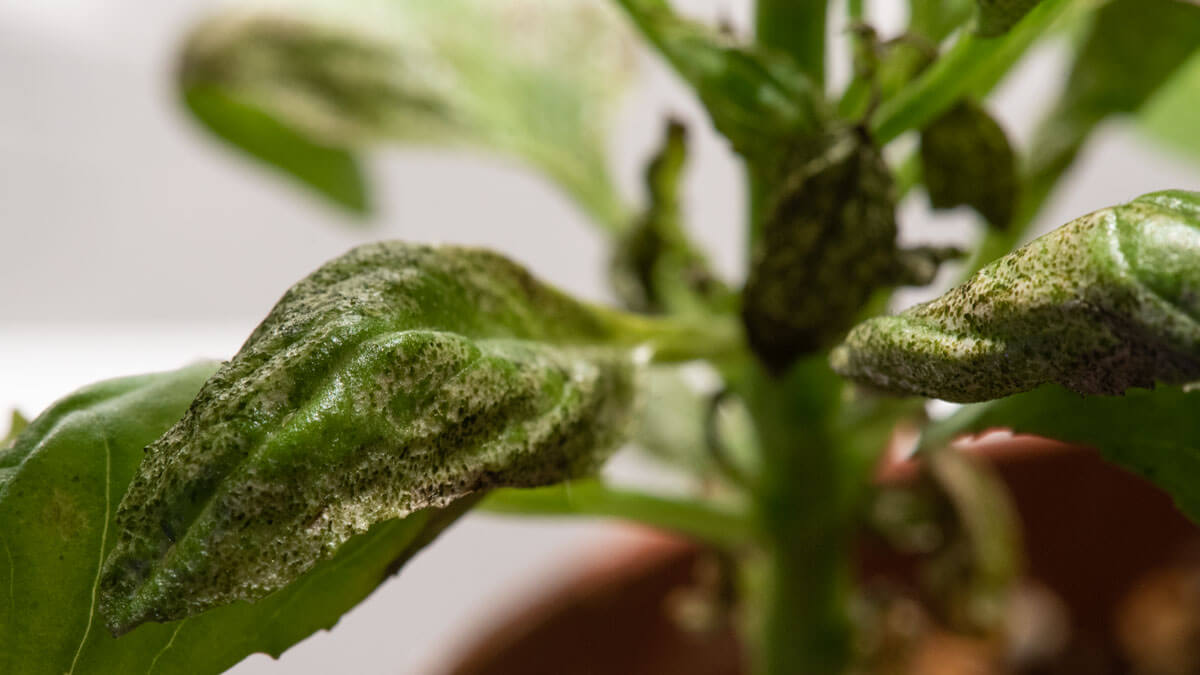
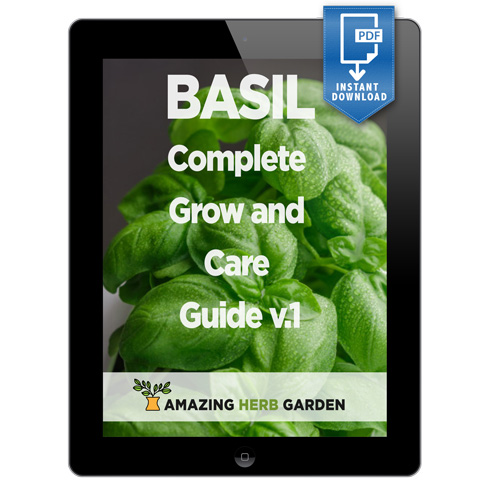
Join the community
If you are looking to grow an amazing herb garden, I strongly recommend signing up to our community and gain access to our FREE downloads and regular updates. We want to ensure your success by sharing our tips and tricks with you for growing herbs.
SUBSCRIBE